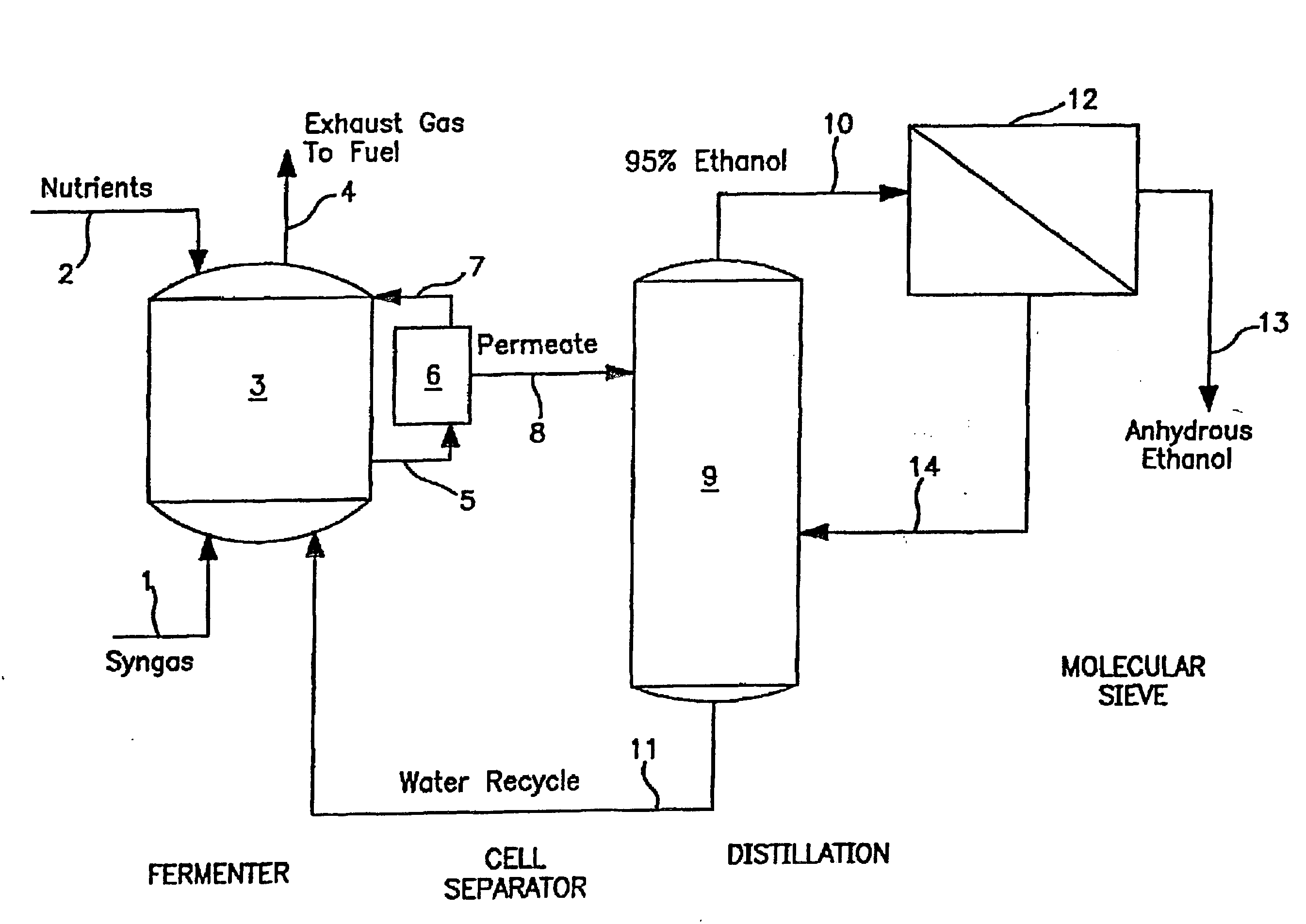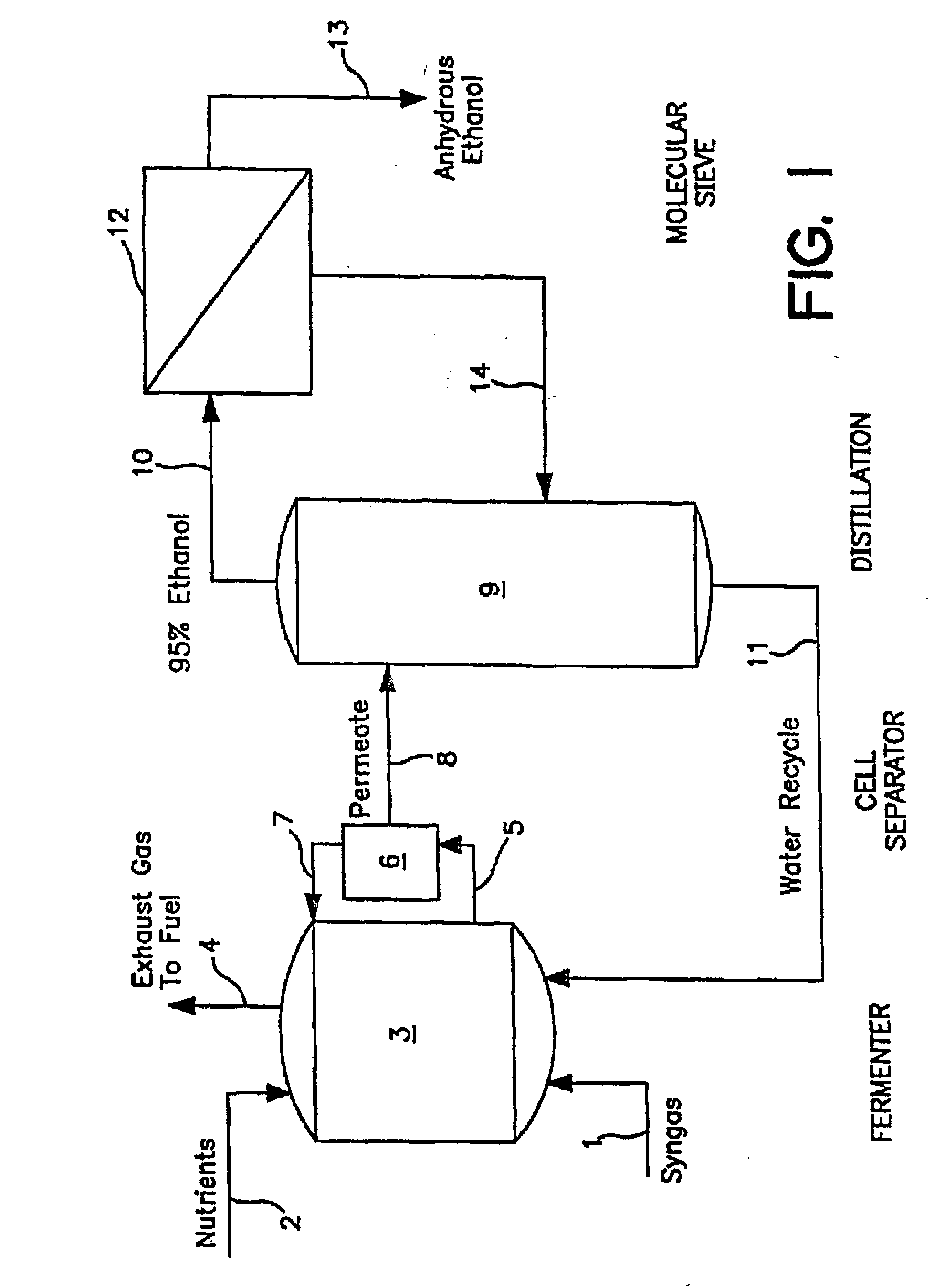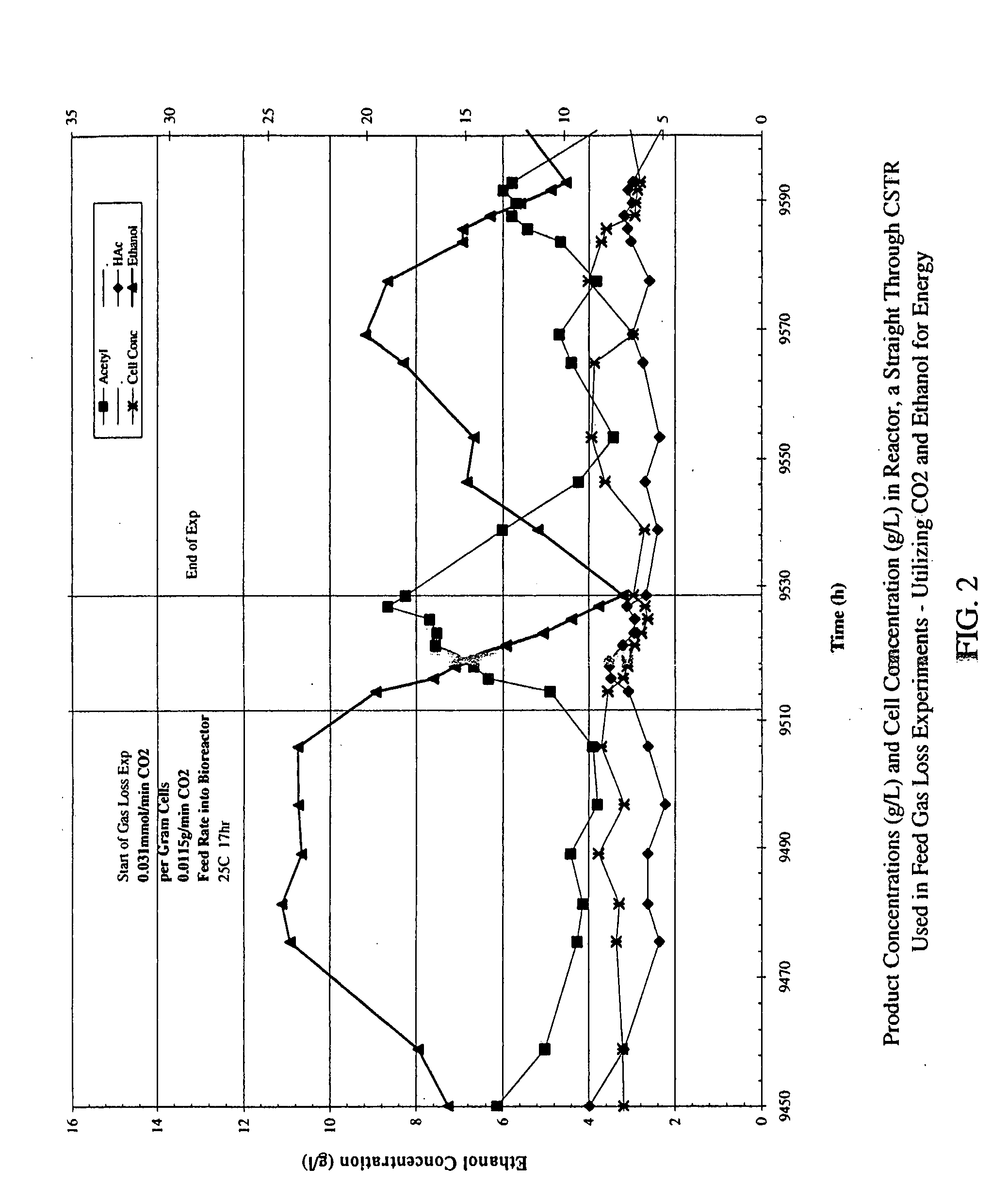Method for sustaining Microorganism culture in Syngas fermentation process in decreased concentration or absence of various substrates
a technology of syngas fermentation and microorganisms, which is applied in the direction of microorganisms, biochemical equipment and processes, biofuels, etc., can solve the problems of preventing the unable to provide the opportunity for other competing bacteria to grow, and only utilizing the acetate/alcohol pathway. achieve the effect of reducing the temperature from the operating temperature, preventing rapid loss of microorganism culture, and reducing the temperatur
- Summary
- Abstract
- Description
- Claims
- Application Information
AI Technical Summary
Benefits of technology
Problems solved by technology
Method used
Image
Examples
example 1
Microorganism Gas Loss Studies Using Ethanol and CO2 Conversion for Energy
[0117]The purpose of the microorganism experimentation was to determine a method of sustaining culture in the event of a feed gas loss for an extended (>30 minute) period of time. In this example, the focus was on CO2 addition for the conversion of ethanol to free acid as a way for the culture to gain energy during the loss of synthesis gas.
[0118]It has been known for quite some time that certain acetogenic microorganisms can convert ethanol back to acetic acid using CO2, but no testing had been done to determine if this process could be used to sustain the culture for long periods of time when there was no synthesis gas available. An embodiment of the present invention provides a solution for surviving a loss of feed gas since ethanol and CO2 (in the form of sodium bicarbonate) are readily available for use due to normal bioreactor operations. In addition to adding CO2 for the conversion of ethanol to acid th...
example 2
[0134]Survival of the culture for 17 and 24 hours without feed gas
[0135]Experimental conditions:
[0136]16.9 hr without feed gas
[0137]Temperature decreased to 25° C.
[0138]Medium addition was unchanged for the experiment
[0139]0.030 mmol / min CO2 feed rate per gram of cells
[0140]Permeate purge was used to hold in the cells
[0141]CO2 was NOT stripped from the culture broth at the start of the experiment
[0142]Before the start of the experiment the culture cell density was 3.7 g / L; pH was 4.44; redox was −440 mV; CO and H2 uptake was 5.0 and 1.2 mmol / min respectively; CO and H2 conversions were 86 and 40% respectively; ethanol was 23.5 g / L; and acid was 3.9 g / L.
[0143]At t=9511.6 hours, the feed gas flow rate was decreased from 474 mL / min to 53 mL / min. The agitation was dropped from about 400 to about 50 rpm, and the temperature set point on the reactor was decreased from 38 to 25° C. within about 12 minutes. Once cooling was done, 38.5 g / L sodium bicarbonate as started at 0.57 mL / min providi...
example 3
[0147]Experimental Conditions
[0148]About 24 hr without feed gas
[0149]Temperature dropped to about 25° C.
[0150]Medium addition was unchanged for the experiment
[0151]0.035 mmol / min CO2 feed rate per gram of cells
[0152]Permeate purge was used to hold in the cells
[0153]CO2 was NOT stripped from the culture broth at the start of the experiment
[0154]Before the start of the experiment the culture cell density was about 3.2g / L; pH was about 4.50; redox was about −425 mV; CO and H2 uptake was 4.7 and 1.5 mmol / min respectively; ethanol was about 17.7 g / L; and acid was about 2.93 g / L.
[0155]At t=1888 hours, the feed gas flow rate was decreased from about 474 mL / min to 53 mL / min. The agitation was dropped from about 400 to about 50 rpm, and the temperature set point on the reactor was decreased from about 38 to about 25° C. in about 14 minutes. Once cooling was done, the sodium bicarbonate addition was started using a about 38.5 g / L NaHCO3 flow of 0.58 mL / min providing a CO2 feed rate of 0.035 m...
PUM
| Property | Measurement | Unit |
|---|---|---|
| concentration | aaaaa | aaaaa |
| concentration | aaaaa | aaaaa |
| concentration | aaaaa | aaaaa |
Abstract
Description
Claims
Application Information
 Login to View More
Login to View More - R&D
- Intellectual Property
- Life Sciences
- Materials
- Tech Scout
- Unparalleled Data Quality
- Higher Quality Content
- 60% Fewer Hallucinations
Browse by: Latest US Patents, China's latest patents, Technical Efficacy Thesaurus, Application Domain, Technology Topic, Popular Technical Reports.
© 2025 PatSnap. All rights reserved.Legal|Privacy policy|Modern Slavery Act Transparency Statement|Sitemap|About US| Contact US: help@patsnap.com



